How to Create an Educational App in 2024
Table of Contents
- Different Types of Education Apps
- Trends in the Development of eLearning Apps
- How to Create an Educational App Step by Step
- Core Elements of Educational App Development
- eLearning Apps for Students: Must Have These Features
- Important Features for Teachers’ Use in eLearning Apps
- What is the Price to Build an Education App?
- Monetization Models for eLearning Apps
- How to Develop Educational Apps?
- Let’s Collectively Create an Impact
- Frequently Asked Questions
The time for digitization in the education sector has come. The traditional face-to-face
learning methodology has been gradually supplanted by eLearning apps and EdTech
solutions in recent years.
The development of education apps, in particular, has reached a significant milestone in
recent years and is poised to rise to $1.72 trillion between 2022 and 2026. This boom in
digital education has been influenced by social isolation, curfews, and a lack of
entertainment options; especially, the pandemic prompted businesses and educational
institutions to adopt mobile learning solutions provided by private content suppliers.
Unique teaching methods and constant accessibility are also advantages of app-based
education with this shift to mobile solutions. Mobile-based learning makes it possible to
conduct excellent training now.
Be prepared for stiff competition if you want to enter the education niche. This detailed
guide on how to develop educational apps was created as a result.
Different Types of Education Apps
The market for education apps today is extensive and varied. It’s flooded with numerous
app types that serve diverse target groups, including professors or ambitious students.
Therefore, you should evaluate the market potential before starting to design and
develop education apps.
Apps for learning languages
Precision is paramount in logistics, and applications like Uber Freight leverage in-app calendars for meticulous scheduling of tasks such as loading, shipping, and delivery. This feature allows carriers and shippers to easily track and plan past and upcoming shipments.
Learning a new language can be difficult and time-consuming. However, to make this
process easier, more and more people are using language learning applications. Due to
the reopening of borders, this app category fared remarkably well in 2022, growing by
31% YoY.
The increase in immigration is one of the leading market factors. Approximately 84.8
million Americans were born abroad as of today, making up nearly one-fifth of all
migrants.
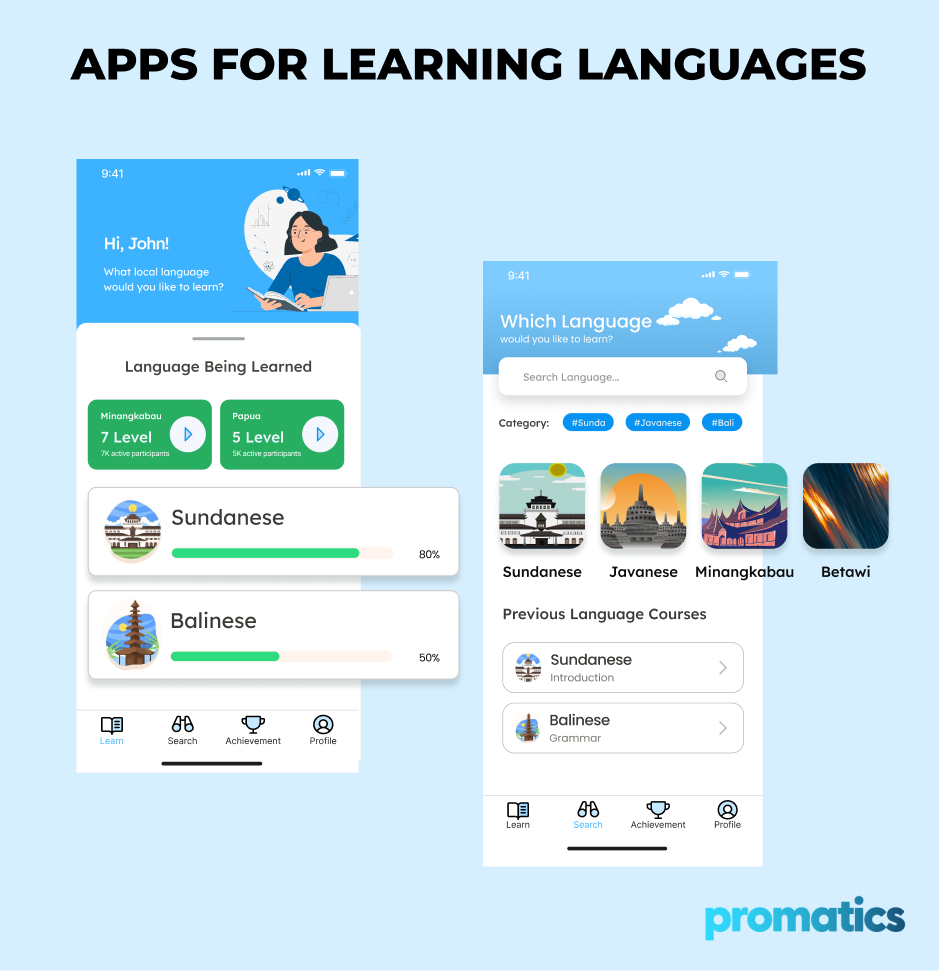
Additionally, the quick uptake of virtual reality in language instruction encourages
market maturity. For instance, mixed reality accelerates academic development by
amplifying immersive language learning.
With more than 500 million total users and more than 56 million active users per month,
Duolingo is the undisputed leader in the category. The app’s income in 2022 increased
by +47% YoY to $369.5 million. Duolingo provides paid subscriptions, advertisements,
and tests of language skills to make money.
Apps for Learning Management System (LMS)
The management and monitoring of student progress in educational institutions is
frequently done using LMS apps. The management of academic course delivery and
training programs is another goal of this app type.
An organization can build and manage course enrollments, offer course materials,
evaluate student progress, produce reports, and support employee training with a
typical LMS. The global LMS market is anticipated to grow to $37.9 billion by 2026.
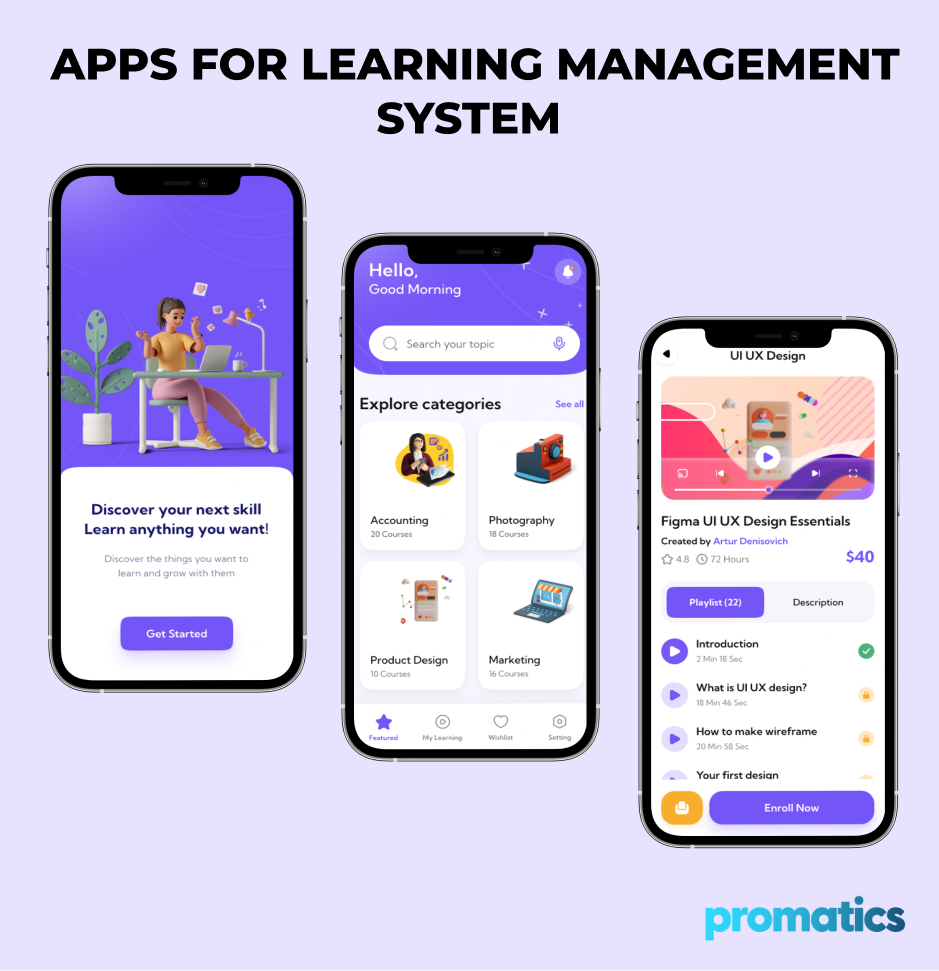
This category’s demand is likewise changing to reflect more extensive employee
training. LMSs are gaining popularity as millennials take over the workforce globally
because they enable inclusive and adaptable training sessions.
The rising trend of bringing your own device (BYOD) among businesses caused the
need for LMS platforms to surge between 2021 and 2022. With the growing acceptance
of hybrid work environments in post-pandemic environments, the BYOD trend is here to
stay.
In this market, GoToTraining is a well-known tool that facilitates mobile online training. GoTo claims that its application hosts more than three million training sessions annually with over 700,000 participants. GoToTraining sells monthly subscriptions to make money.
Apps for Classroom Education
Apps made for use in a classroom environment are included in this category. They can
be used by teachers to keep track of student grades, homework assignments, and other
crucial information in order to better manage their classrooms. This kind of program can
help students take notes, prepare for tests, and more.
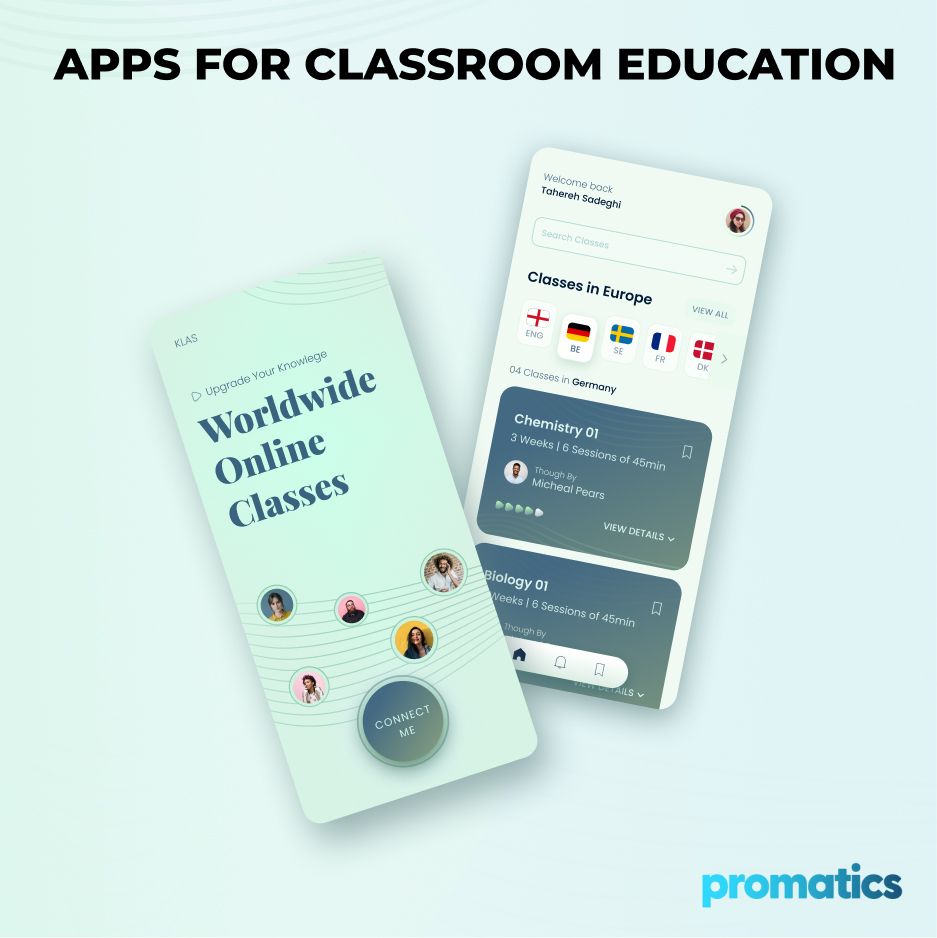
An excellent illustration of a classroom app that serves instructors and students in
grades K–12 is GoGuardian. A variety of products are available on the app for various
user categories, including parents.
More than 25 million kids and 500,000 educators already utilize GoGuardian’s products,
which are available in over 10,000 schools. In 23 of the country’s 25 major districts, the
GoGuardian technology is also accessible.
Apps for Online Courses
Platforms for mobile learning are a fantastic method to master new skills or improve
existing ones. Despite possible differences, most online course apps provide similar
advantages, such as access to excellent course materials and the freedom to study at
your speed.
Additionally, the popularity of online upskilling is fueled by the growing trend of skills
development, which keeps people employable in the face of shifting employment trends
and the economy.
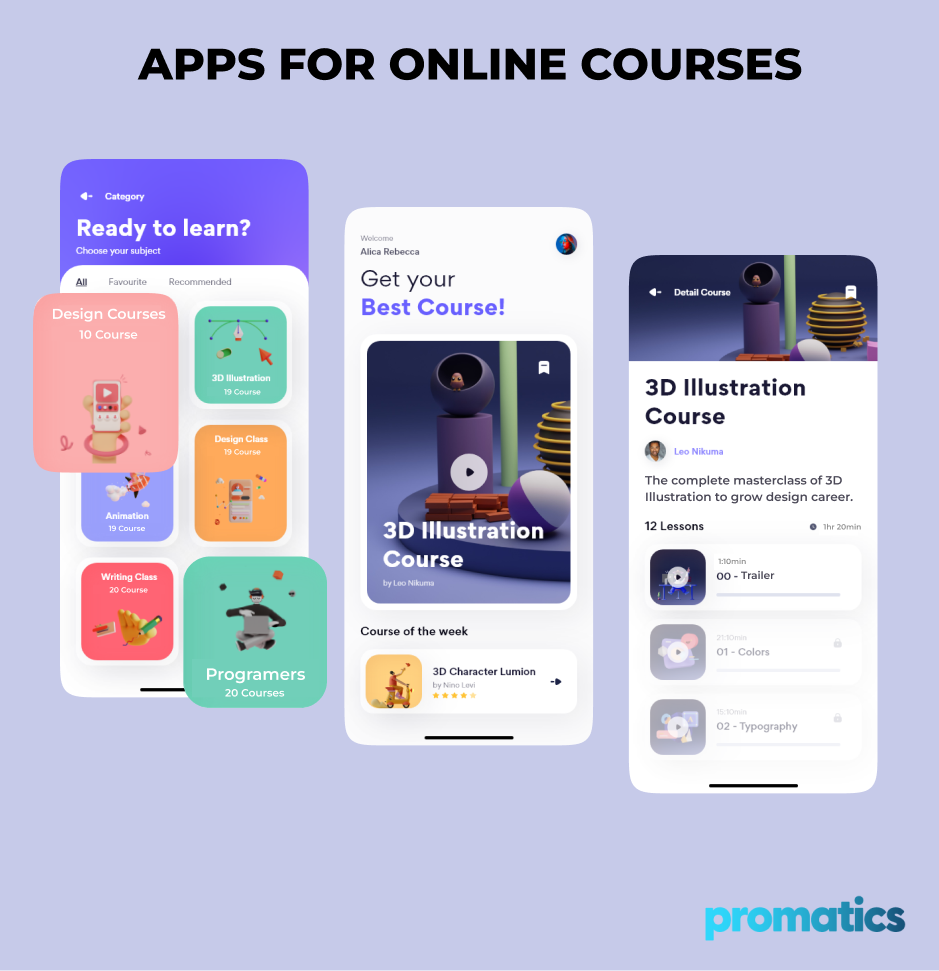
Massive open online courses (MOOCs), specializations, and even degrees from
institutions are all offered by Coursera, which is frequently included among the best
online learning platforms. In 2022, the corporation recorded $523.8 million in yearly
earnings, a 26% YoY increase in revenue. Subscriptions and premium programs are
part of Coursera’s revenue stream.
Apps for Exam Preparation
Exam prep apps, as their name suggests, assist students in getting ready and
maintaining concentration while doing their homework. By tracking and monitoring
users’ progress and performance, this app category can either offer academic support
or help users study more productively.
In general, it is anticipated that the U.S. test preparation industry will increase to $10.72
billion by 2024. Analytical instruments for test preparation are a crucial market enabler
in this industry.
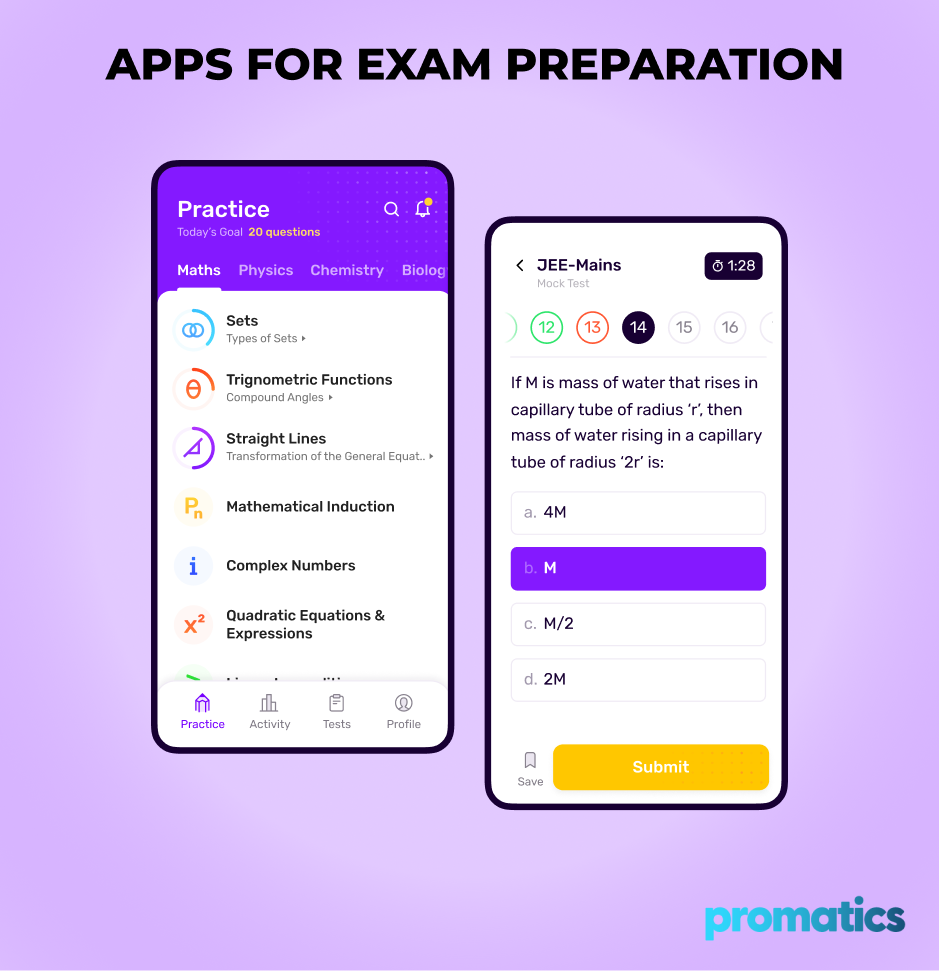
BYJU’S Exam Prep is a thorough exam preparation program that provides a wide range
of tests, quizzes, and other activities. It also offers ready-made study plans for a number
of well-known tests. The app offers a subscription plan to unlock premium features and
has over 30 million registered users.
Education Apps for Kids
Through interactivity and gamification dynamics, learning solutions for children foster a
passion for learning. To further support child development, preschool teachers can also
employ mobile applications. Due to the effects of kids going back to traditional
classrooms in 2022, most children’s education apps in the US witnessed a year-over-
year decline in income, but some of them still managed to be quite successful.
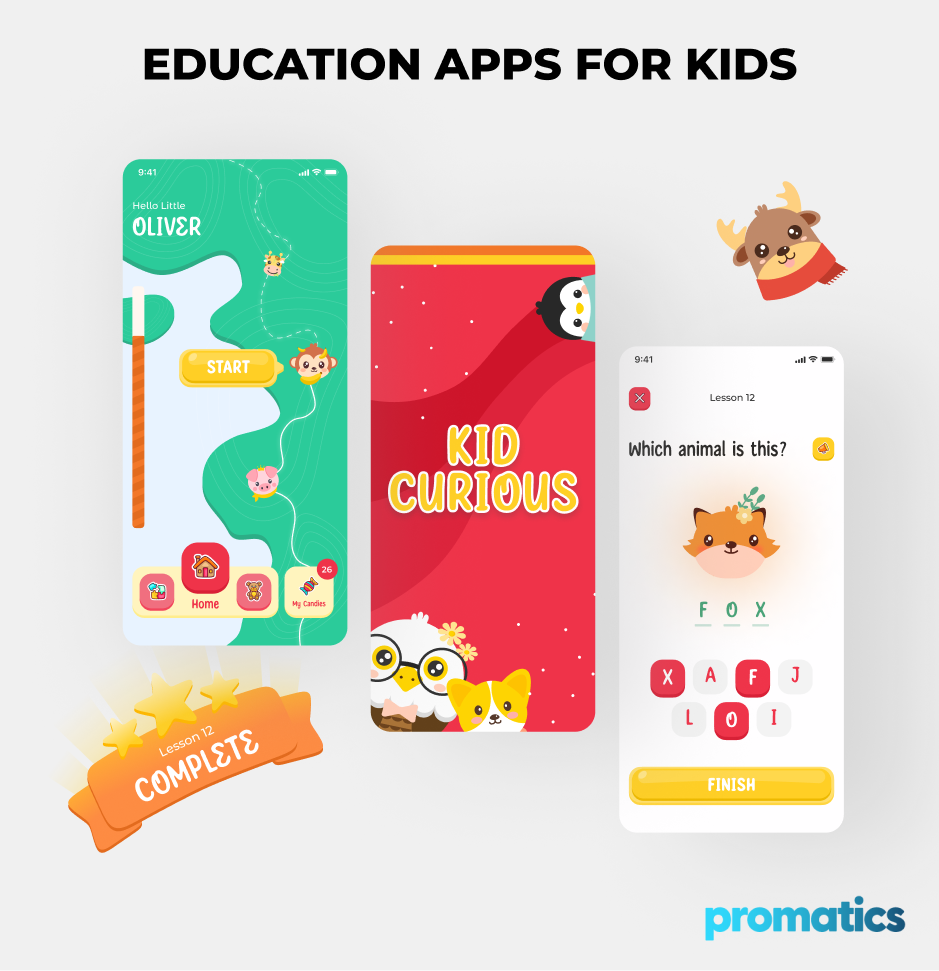
An award-winning software for toddlers called Kiddopia brought in $22.7 million in sales
in 2022. Kiddopia is a straightforward and enjoyable approach for your child to practice
math, science, and problem-solving skills. Kiddopia has over 17 million users. A 7-day
trial of the app is available to users, or they can pay $7.99 per month for a subscription.
Trends in the Development of eLearning Apps
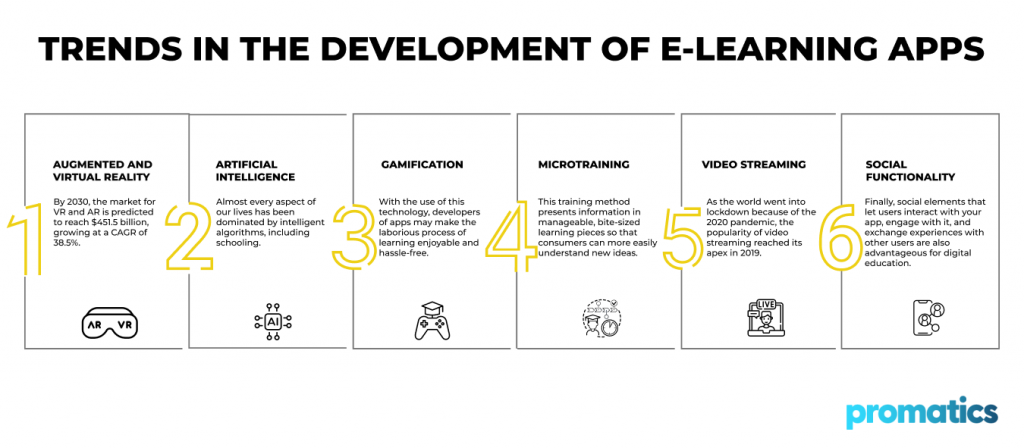
Evolving technical developments are changing eLearning trends in 2024. As businesses
compete for users, eLearning apps are consequently becoming edgier. A group of
technologies that have an impact on the present digital learning landscape have been
selected by us.
Augmented and Virtual Reality (VR and AR)
By 2030, the market for VR and AR is predicted to reach $451.5 billion, growing at a
CAGR of 38.5%. Extended reality is influencing transformation in both traditional and
online learning environments. For instance, by analyzing scannable content and
arranging learning materials graphically, augmented reality (AR) facilitates personalized
learning.
With regard to VR, it enhances visualization and encourages learners to have
immersive experiences. The Merge EDU app, for instance, uses advanced technologies
to let users learn STEM through 3D simulation and navigation.
Artificial intelligence (AI)
Almost every aspect of our lives has been dominated by intelligent algorithms, including
schooling. The market for AI in education was valued at $2.1 million in 2022, and it is
anticipated to reach $25.8 million by 2030. In educational apps, AI algorithms can
automate note-taking and grading, produce personalized recommendations, and
provide chatbot assistance.
For instance, AI speech recognition is the heart of the ELSA Speak app. The program
analyzes the user’s English pronunciation and fluency based on the audio input and
provides them with immediate and in-depth feedback.
Gamification
With the use of this technology, developers of apps may make the laborious process of
learning enjoyable and hassle-free. Scientific evidence also supports the value of play in
the learning process; in this study, Pho and Dinscore provide evidence that game-based
learning helps the brain form new synapses more quickly.
Regarding in-app education, levels, prizes, and progress indicators increase user
motivation and push them to advance more quickly. Leaderboards, countdowns, and
other gamification components can also foster competition among users, motivating
them to keep learning.
For instance, the Quizlet app assists instructors and students in gamifying content and
simplifying complex concepts. With the goal of enhancing learning, its gamified study
modes, such as Gravity and Match, impose time or other restrictions.
Microtraining
This training method presents information in manageable, bite-sized learning pieces so
that consumers can more easily understand new ideas. Since smaller packages are
more straightforward to master, microtraining (or microlearning) also makes the material
more palatable and exciting. The microtraining approach may be seen in action in
programs like Duolingo, Word of the Day, and flashcards.
Video Streaming
As the world went into lockdown because of the 2020 pandemic, the popularity of video
streaming reached its apex in 2019. E-learning programs quickly adapted to this
technology at the time and assisted teachers in getting students outside of the
classroom. The market is anticipated to reach $4.29 billion by 2028.
Real-time communication between viewers and streamers is one of the leading
commercial forces behind video streaming. The learning process consequently
becomes more personalized and engrossing.
Video conferencing today allows for remote learning and accessibility to education.
Furthermore, separate live class systems that promote multimodal learning include
Dacast and Vimeo, which are developed for streaming.
Social Functionality
Finally, social elements that let users interact with your app, engage with it, and
exchange experiences with other users are also advantageous for digital education. For
instance, social network integrations in educational apps speed up the registration
process or let users share their progress online.
Customizable user profiles also enable learners to be recognized and give app owners
helpful user information. Additionally, live chat assistance and push alerts can increase
app engagement while giving each conversation a more customized feel.
How to Create an Educational App Step by Step
Now that you are aware of the principles of creating an educational app let’s examine
what is required to make one. Like other software kinds, the development lifecycle for
educational apps is iterative and consistent in order to provide a good outcome.
Decide on a niche
The most crucial phase before developing an app is preplanning. This stage, which is
sometimes referred to as ideation, entails a thorough examination of the market and
your competitors to aid in the decision of which development path to take.
Without this stage, your product can be designed for the incorrect market. You should,
therefore, locate market opportunities to position your project for success.
Develop the idea to create an educational app and specify the features
Your app development team works with you at this step to refine the project scope and
lay out the precise project requirements. A team begins with high-level needs and works
down to specific requirements, such as system restrictions and user requirements. This
step will produce a list of essential features and specifications that will serve as the
building blocks of the final product.
Create Engaging UI/UX
A group of UI/UX designers will wrap your system in an appealing user interface. An
effective app design is built on usefulness and convenience in addition to the visual
elements. Thus, the primary objective of this stage is to provide a slick design with
easily accessible components and a smooth user experience.
The user experience varies according to age group and associated cognitive capacities.
For instance, learning apps for toddlers need to have a lot of visual components, a lot of
media utilization, vibrant colors, and gamified content. Another prominent design
component that can enhance instructional value for students of any age and aid in
memory retention is animation.
Your design team will give you a design layout that includes a thorough design
description for app developers as the last phase.
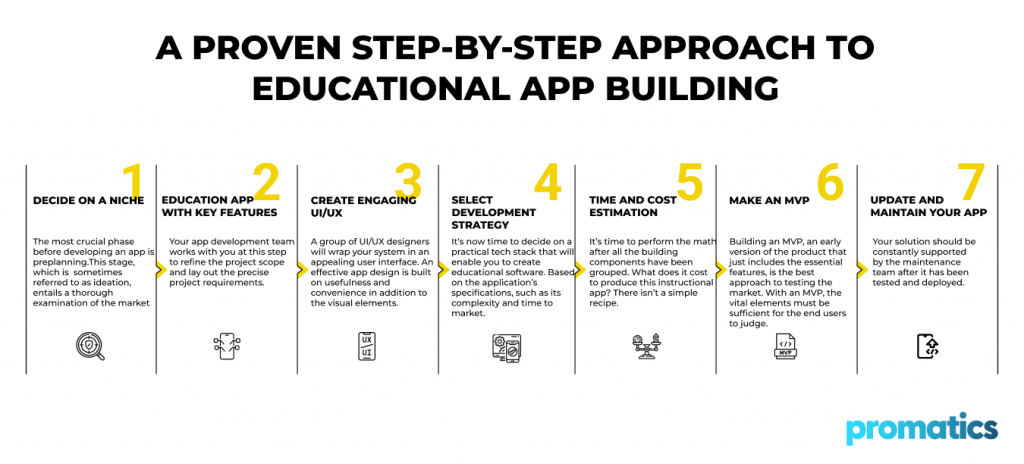
Select a development strategy
It’s now time to decide on a practical tech stack that will enable you to create
educational software. Based on the application’s specifications, such as its complexity
and time to market, the technology should be chosen. Moreover, other factors that
affect your decision-making include core functionality, the number of platforms, and
security precautions.
Your future team structure will be influenced by a set of technologies and the project
scope. As a result, you must gather professionals with the appropriate technical skills
and fill out the responsibilities required for the software development team. During this
phase, project managers, QA professionals, and business analysts all help to deliver
your solution successfully.
Time and cost estimation
It’s time to perform the math after all the building components have been grouped. What
does it cost to produce this instructional app? There isn’t a simple recipe. Your project’s
scope and the amount of features you need to develop will determine the pricing.
Promatics India provides a choice of pricing structures to accommodate various client
needs. We provide time and material options if your budget and requirements haven’t
been determined yet. In other instances, our cooperation might be based on a monthly
fee or fixed-price strategy; whichever model you choose, you should make sure it suits
your resources and the needs of the project.
Make an MVP (Minimum Viable Product)
Building an MVP, an early version of the product that just includes the essential
features, is the best approach to testing the market. With an MVP, the vital elements
must be sufficient for the end users to judge whether your solution is viable.
When your MVP is complete, it is available for testing and feedback from the intended
audience. The development team then improves your solution and adds new features
as necessary. As a result, an MVP enables you to test your theories without incurring
significant development costs.
Updating and maintaining your educational app
Your solution should be constantly supported by the maintenance team after it has been
tested and deployed. Application upkeep is essential to the health of the app.
This continuing task guarantees that your application is current and consistently
performing at its peak. Regular feature updates, emergency problem-solving, and audits
for iOS and Android are also included in app maintenance tasks.
Core Elements of Educational App Development
Although each eLearning application differs, they share a standard set of fundamental
features. We’ll go over the essential components of an instructional app below. Based
on the user group, we separated them into two categories: students and teachers.
eLearning Apps for Students: Must Have These Features
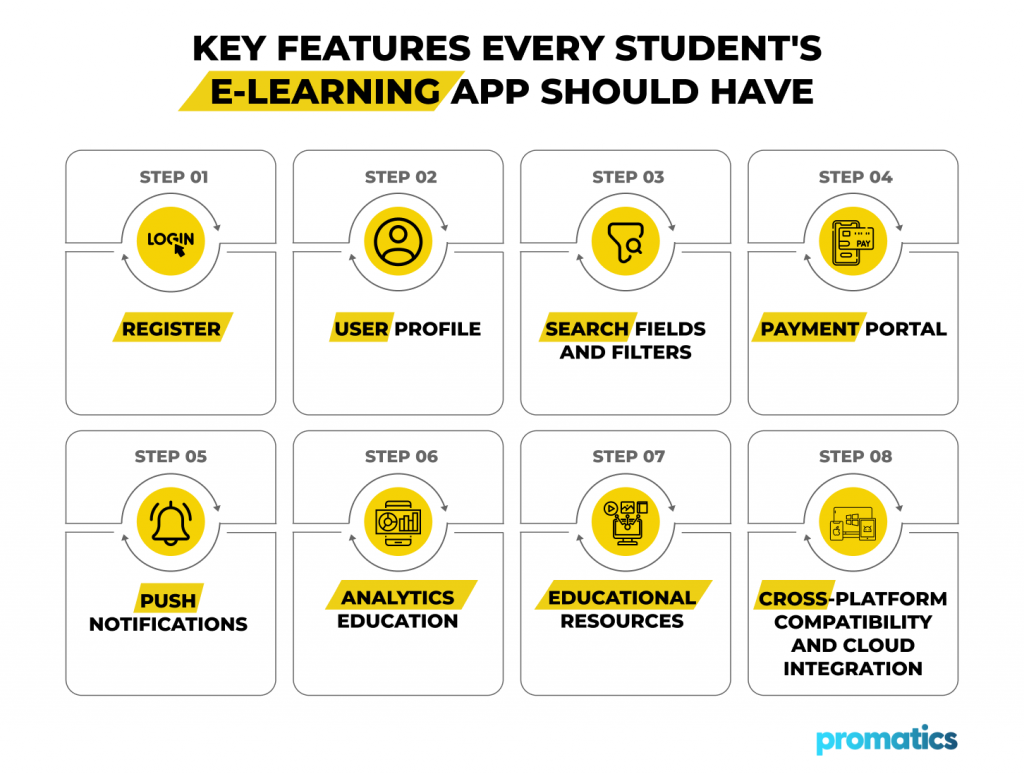
Enroll and log in
Users can create profiles and keep track of their progress thanks to these capabilities
that provide unique user identification within your application. You should use social
media or email logins for your one-step sign-up process.
User profile
The account of a learner should have a profile photo and basic user information. Users
should be able to view both personal and app-related data on their profile page,
including the number of courses they have purchased, billing information, and so forth.
Search fields and filters
The search function should make it simple for students to find educational material.
Among the most used search methods on eLearning apps are keyword searching and
browsing categories. To provide students with appropriate courses and content, you
could also wish to integrate a recommendation engine.
Payment portal
You must incorporate a payment mechanism if your educational app relies on paid
memberships or offers premium courses. Integrations with payment gateways like
PayPal make transactions straightforward and quick. To speed up the payment process,
the majority of mobile apps also set up Google Pay and Apple Pay connections. Your
possibilities for making payments are also further expanded by wallets, credit cards, and
other tools. Regardless of the gateway, payment information, and passwords must be
securely maintained within the app.
Using push notifications
The feature of choice for re-engaging users and enabling two-way contact between app
owners and users is alerts and notifications. As a result, notifications might let students
know about upgrades or brand-new difficulties. Notifications can increase the visibility of
recommendations, new courses, or enabled features.
Analytical education
Additionally, by listing ongoing and completed courses, badges, diplomas, successes,
and goals, learning applications show the progress of learning. The ideal form of this
feature would be a thorough dashboard.
Educational resources
Learning resources are typically categorized in EdTech applications based on
relevancy, topic, and other factors. There could be theoretical classes, live-streamed
lectures, interactive text exercises, video and audio lessons, and exams.
Cross-platform compatibility and cloud integration
You must ensure a seamless user experience for instructors and students who
frequently utilize a variety of devices for educational reasons. The cloud should,
therefore, be used to preserve and sync all progress so that users may use the app
from any device or platform.
Important Features for Teachers’ Use in eLearning Apps
Signup and login
Teachers must be able to sign up for the system and access their profiles, just like
students can. A full dashboard with current tasks, their pupils, and other pertinent
information should be included in an app’s profile, along with basic information about the
user.
Admin Panel
This function informs teachers of their students’ academic obligations, homework,
extracurricular activities, etc. Additionally, it needs to monitor students’ progress,
grades, and attendance.
Notifications
Finished assignments, tests, and enrolled students can be sent to teachers.
Test-making equipment
To assess students’ understanding, teachers ought to be able to design online tests.
Therefore, for this user group, a configurable test creator is crucial. This function should
allow teachers to administer exams online, track the results, and grade the exams
automatically.
Live sessions
The software may hold interactive live courses for the students to study from a distance,
thanks to the video-streaming capability. A virtual classroom with the ability for video,
audio, and instant messaging can also be part of your instructional system.
What is the Price to Build an Education App?
One of the most ambiguous issues in software development is the cost. The amount will
be determined by a few factors because there is no conclusive solution. Your
development expenses for educational software will be determined by:
- Application complexity (simple, medium, complex);
- Platforms and devices;
- Core features;
- UX/UI design;
- Functional costs (third-party integrations);
- Dashboards and animation;
- Innovative features (AI-based functionality), and more.
According to our experience, developing a mobile application might cost between
$50,000 and $300,000. The investment required for the app increases with its level of
sophistication.
We always advise creating an MVP first to assist in reducing costs. The MVP aids app
owners in reducing development costs while gaining a more profound comprehension of
pertinent features and user requirements.
Want assistance with cost estimation? Send us the specifics of your project, and we’ll
provide you with a free, accurate quote.
Monetization Models for eLearning Apps
Depending on the recipient, multiple monetization techniques are used to make income
from educational apps. The four most common ways to profit from your educational
product are listed below. To increase profits, you can either stick with a single model or
combine a few other approaches.
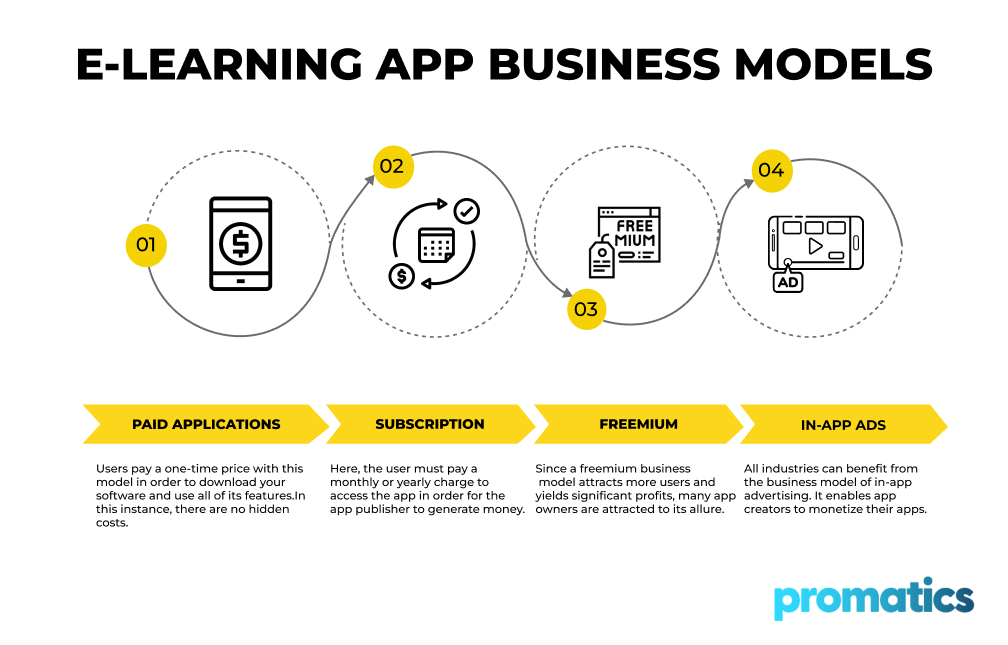
Paid applications
Users pay a one-time price with this model in order to download your software and use
all of its features. In this instance, there are no hidden costs or in-app purchases in the
application. As a result, you receive a single revenue stream that may be increased with
in-app advertisements.
Subscription
Here, the user must pay a monthly or yearly charge to access the app in order for the
app publisher to generate money. This model also assumes a free trial that enables
users to examine the features and functionality.
Freemium
Since a freemium business model attracts more users and yields significant profits,
many app owners are attracted to its allure. In this case, the program has a rudimentary
or constrained set of functions and offers full capability in exchange for a premium fee.
In-app Ads
All industries can benefit from the business model of in-app advertising. It enables app
creators to monetize their apps by displaying advertising. This revenue stream offers a
variety of ad styles, including banner ads, incentive ads, and more, to capitalize on the
user base.
How to Develop Educational Apps?
Our Promatics India team has been providing instructional apps to international
businesses and app publishers since its inception. We’ve perfected an app development
process over the years where each stage and team adds the most value to the finished
result.
Our team is capable of handling end-to-end development or just producing a UI/UX
design. Additionally, we handle the back-end or offer a last-minute rescue for pressing
projects. Our team can often create a top-notch eLearning solution in 3 to 15 months.
The complexity of the program and the number of development phases affect the
precise time frame.
We have a proven track record in developing instructional apps. An outstanding
example is a preschool educational app, Uniword, crafted and delivered by Promatics
India. Uniword offers guided reading sessions, entertaining activities, and a plethora of
interactive educational games designed for youngsters. This educational app,
developed for both Android and iOS platforms, has garnered over 200K downloads due
to its distinctive functionality and kid-friendly interface. If you’re looking to create an educational app that captivates young learners, we have the expertise to bring your vision to life.
Let’s Collectively Create an Impact
Education-related apps have multiplied since knowledge is now more accessible than
ever. The educational process is augmented by online courses, language-learning
apps, and other online learning options, making it more interactive and personalized.
Apps for mobile learning are more accessible and create a structured learning process
in a distance learning setting. According to Research and Markets, eLearning app
downloads will increase in light of the advantages.
The time is here if you have been waiting for the ideal moment to enter the market. Get
in touch with us, and we’ll assist you in developing a robust eLearning application.
Frequently Asked Questions
What are the key trends when you make an educational app in 2024?
The trends include the integration of Augmented and Virtual Reality, Artificial
Intelligence, Gamification, Microtraining, Video Streaming, and Social
Functionality.
How can eLearning apps benefit from Augmented and Virtual Reality (AR and VR)?
AR facilitates personalized learning by analyzing scannable content, while VR
enhances visualization and offers immersive learning experiences, as seen in
apps like Merge EDU.
What are the essential features for teachers in eLearning apps?
Teachers need features like an Admin Panel for monitoring students’ progress,
Notifications for assignments, Test-making tools, Live sessions, and a
Dashboard for managing tasks and student-related information.
What are the standard monetization models to make educational apps?
Monetization models include Paid applications, Subscription-based
access, Freemium with limited features, and In-app Ads, providing flexibility for
app owners to choose based on their goals.
Still have your concerns?
Your concerns are legit, and we know how to deal with them. Hook us up for a discussion, no strings attached, and we will show how we can add value to your operations!
